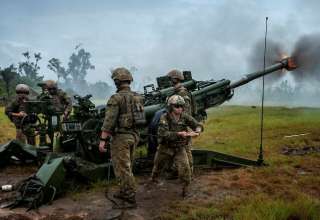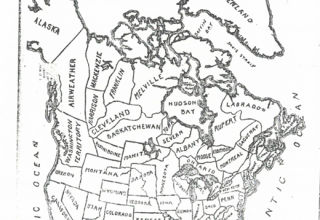by Richard Stone
The release of a report from a right-wing defence and security lobby organisation with strong links to the military-industrial complex was timed to coincide with the release of the 2024 National Defence Strategy in Canberra. Military planners appear to be considering a return to civil defence provision along similar lines to that used in the previous Cold War. Sensitive military documents from the period, which were subsequently declassified, have revealed some areas of serious concern; the same problems are now set to reappear in contemporary Australia.
In April, the Williams Foundation released a report calling for a return to civil defence provision similar to that used in Australia during the previous Cold War. (1) While the main part of the plan was the defence and security of Australia, the hidden agenda was clearly something else; it provided a chilling picture of shadowy, clandestine organisation, preoccupied with intelligence-gathering and covert operations.
The report, in fact, actually specified that the ‘defence of the Australian theatre would be a higher priority than sending our forces abroad’. (2)
The Williams Foundation was named after Richard Williams (1890-1980), a well-known Australian military figure, and from its official web-sites prides itself on ‘independent and innovative thinking’. In reality, it is something else; a high pressure defence and security lobby organisation inside the corridors of power, with strong links into the military-industrial complex, with Lockheed Martin links displayed on its official website.
While great play has been made in the report to the seeming vulnerability of Australia to attack, plans for the new proposed civil defence organisation to deal with ‘social cohesion, domestic security and public safety’, should not be taken literally. (3) Reference was also given to ‘we should modernise the practice from the 1930s and the 1950s of the preparation of a war book’. (4)
In all cases a common pattern of government and military policies included the closure of civil defence provision activated during the Second World War and subsequent re-establishing similar provision in the late 1940s and 1950s with recruitment of ‘safe’ anti-communists. (5) At a meeting of the NATO Confederation of Reserve Officers in Westminster in August 1948, a decision was taken to lobby for a revival of a civil defence capacity for Western Europe. A ‘representative from the British Territorial and Army Volunteer Reserve told the meeting it is not the case of training a force to be kept in reserve doing nothing while waiting for a war that might never happen. It has a useful function during civil emergencies’. (6)
While Australia was not a NATO member, its links with the British Commonwealth served a similar purpose.
The War Book issued in 1957 took place Australia was governed by a right-wing Menzies administration which followed US-led Cold War defence and security provision. Publications from the period leave little to the imagination. Those associated with the War Book were the most aggressive side of the business-classes. The main plan was to control civil society and channel political opposition; the main achievement of those concerned was to split the ALP and render it politically unable to win federal elections for decades. Trade unions, likewise, were subject to constant vilification.
One of the main perpetrators behind the thinking outlined in the recent report is James Paterson, Opposition Home Affairs and Cyber Security spokesman. He is not a quiet, thoughtful individual. Addressing the annual ANZAC Oration at the Robert Menzies Institute in Melbourne, he warned ‘that urgent action is needed to bolster the ADF and address a workforce crisis’. (7) The new proposed civil defence provision would appear part of the same package. The Liberals, likewise, have long toyed with the return of conscription on the basis of social cohesion, terminology used specifically in the report.
Similar references can also be found in the main National Defence Strategy 2024 publication which contains an emphasis on the fear of subversion without specifically using the terminology categorically. (8) Emphasis is also placed in the publication to supply-lines and Australian industry. (9)
While stated aims remain, political agendas, however, can easily be hidden.
The main enemy during the previous Cold War was not the Soviet Union but the ‘enemy within’: anti-communist far-right organisations developed strong links with those welding class and state power. The far-right National Civic Council, for example, ‘was approached by Australia’s spy-chiefs when the possibility of their anti-communist crusade became apparent to ASIO and allied authorities’. (10) The NCC counterpart, the Australian League of Rights (ALOR), likewise, also retained similar links and as the Australian affiliate to the notorious World Anti-Communist League was an advocate of civil defence. (11)
The subsequent demise of the Soviet Union in 1990 resulted in vast troves of western defence and security documents from the Cold War suddenly being declassified. Plausible denial was then not possible for those welding class and state power. One revelation was then to follow another; information about their chilling and paranoid political agenda, entered the public domain.
During the mid-1960s, for example, the US military began upgrading training manuals for counter-insurgency and counter-intelligence programs. One program, Project X, included provision for ‘aerial surveillance, eavesdropping, interrogation, basic counter-sabotage measures, hiring and firing informants, lock picking and censorship’. (12) It was used through intelligence agents infiltrating ‘a wide array of groups, including political parties, labour unions, youth and student groups, religious organisations, and publishing organisations … one manual even cast suspicion on the electoral process. Insurgents can resort to subversion of the government by means of elections’. (13)
During the early 1970s the US began ‘exporting Project X material to US military assistance groups working with friendly foreign countries. By the mid-1970s the Project X material was going to military forces all over the world’. (14) A noticable trend with the US military assistance was channelling expertise through seemingly out-sourced private organisations, created to enable the US to use plausible denial if challenged. Studies of the matter have, however, shown that many of those operations during the previous Cold War were ‘CIA sub-contracts’. (15)
Due to Australia’s close military alliance with the US there is every reason to expect the training material to have been incorporated into Australian Defence Force provision. In fact, ADF training manuals from the same period include similar provision. (16) Military biographies from the previous Cold War provide more than adequate evidence that the US used Australia as a convenient hub for ‘US interests’ in the wider region from soon after the end of the Second World War. (17)
A common pattern with the military training included use of civil defence organisation for a variety of purposes including general surveillance of civilian populations where lists were drawn up following profiling together with the use of paramilitary groups. (18) There was little ambiguity in the eyes of the Pentagon to whom were the targets: one training manual noted the co-ordinated counter-intelligence activities worldwide were against those who oppose the US Defence Department ‘during peacetime and all levels of conflict’. (19)
Those associated with the Williams Foundation who lurk inside the corridors of power have been lobbying for civil defence provision are pursuing a Cold War hidden agenda in support of the US military-industrial complex and a return to the same problems of yesteryear.
We need an independent foreign policy!
1. Credible chance of war: Why we must plan for attack, The Australian, 19 April 2024.
2. Ibid.
3. Website: Williams Foundation.
3. Australian, op.cit., 19 April 2024.
4. Ibid.
5. See: NATO Secret Army’s, Daniele Ganser, (2005), and,
Secret Army’s war on the Left, The Observer, (London), 18 November 1990.
6. NATO and civil emergencies, State Research, Bulletin 1, October 1977, page 9.
7. Libs’ Defence prescription to head off future conscription fight,
The Australian, 23 April 2024.
8. See: National Defence Strategy 2024, (Canberra, 2024), on-line book, page 18.
9. Ibid.
10. Benign spy-master built global network, The Age (Melbourne), 3 March 1998.
11. See: The Australian League of Rights, Andrew A. Campbell, (Victoria, 1978), and,
Voices of Hate, K. D. Gott, (Melbourne, July 1965), and,
Inside the League, Scott Anderson and Jon Lee Anderson,
(New York, 1986), Appendix, The League List, pp. 275-85, and,
Ted Serong, The life of an Australian counter-insurgency expert,
Anne Blair, (Melbourne, 2002), pp. 186-192.
12. Army’s Project X had wider audience, The Washington Post, 6 March 1997.
13. Ibid.
14. Lost History: Project X, The Consortium magazine, 31 March 1997.
15. Inside the League, op.cit., page 305, footnote 18.
16. See: The Division in Battle, Pamphlet Number 1, Organisation and Tactics,
Military Board, Army Headquarters, Canberra, 1 June 1966, and,
Infantry Training, Volume 4, Part 2, Army Headquarters, Canberra, 1 May 1967.
17. See: Ted Serong, Blair, op.cit., pp. 73-203.
18. Washington Post, op.cit., 6 March 1997, and,
Counter Insurgency Operations, US Army, Army Foreign Intelligence Assistance,
ref: 19960709 052, and,
US Army Regulation, 381-20, The Army Counter-Intelligence Program,
declassified 15 November 1993.
19. US Army Regulation 381-20, ibid., Section 1.5, Mission and Policy, page 1, and,
see also, US Army Field Manual 30-31, Appendix B, about the controversy
surrounding those associated with civil defence type provision and the far-right and
terrorism.








